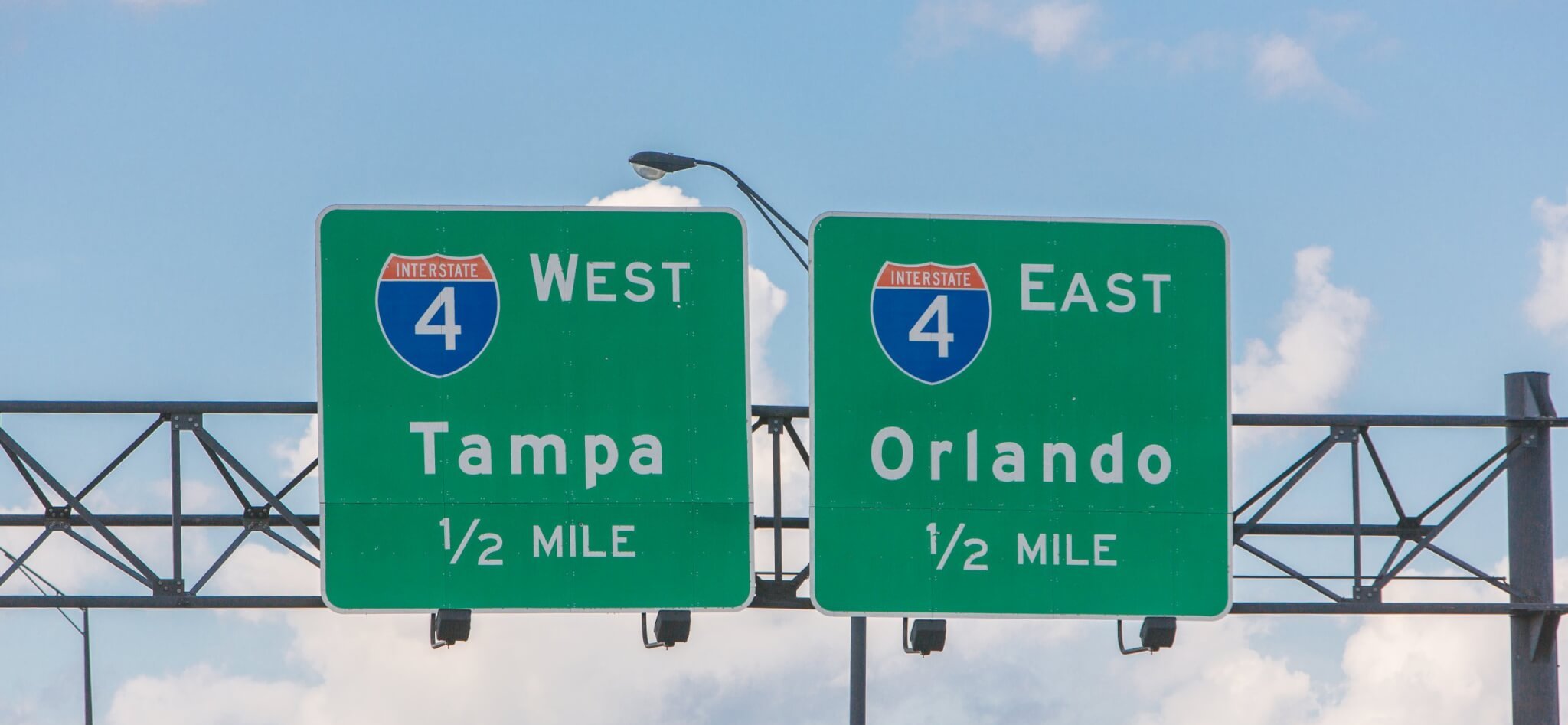Tap Into Every Market
In addition to a comprehensive network of road and rail, Central Florida has two international airports within 40 miles and access to five deepwater seaports, making the region a smart choice for any business. Whether you’re looking for easy access to global markets or a strategic centralized location that keeps transportation costs down, Polk County’s infrastructure will give you the competitive edge you need to stay ahead of the rest.
Air
Central Florida is the only Southeast location to feature two international airports within an hour’s drive: Tampa International Airport (TIA) and Orlando International Airport (MCO), which together serve more than 50 million travelers each year. Offering non-stop flights to key business destinations in Latin America, the Caribbean, and Europe, proximity to these international gateways is major boon for any globally-positioned business.
Ports
Central Florida has access to 3 ports within a 90-mile drive. The Port of Miami, Port of Jacksonville and Port Canaveral are also within reach.
- Port Tampa Bay: Port Tampa Bay is the largest port in the state. At 5,000 acres, Port Tampa Bay is recognized as the petroleum and energy gateway for West and Central Florida. Offering CSX rail service as well as more than one million square-feet of warehousing and cold storage space, Port Tampa Bay is a critical piece of almost every Central Florida supply chain.
- Port of St. Petersburg: Conveniently located within 20 minutes of the Tampa International Airport on the beautiful St Pete waterfront, the Port of St. Petersburg is a popular port-of-call destination.
- Port Manatee: Port Manatee is the closest deepwater seaport to the Panama Canal, providing unrivaled access to Latin American markets. Approximately nine million tons of cargo are moved through the port annually. Port Manatee can be reached by I-4, I-75 and I-295; it also connects to CSX rail lines.
- Port Canaveral: Port Canaveral moves 3 million short tons of bulk cargo each year. The port also features on-site loading facilities for cargo containers, 75,000 square-feet of covered storage capacity and a Foreign Trade Zone measuring five square miles.
- Port Jacksonville: This major Florida port moves 16 million tons of cargo each year. It maintains a Foreign Trade Zone status and is located at the nexus of Florida’s 3 major rail lines: CSX, Norfolk Southern and the Florida East Coast Railway. By road, Port Jacksonville connects to I-10, I-75 and I-95.
- Port Miami: One of the country’s primary container ports, Port Miami is commonly known as the Cargo Gateway of the Americas. The port boasts a large Foreign Trade Zone offering more than three million square-feet of warehousing and logistics space, and its strategic location in one of the world’s most connected cities makes it an important asset to many global businesses.
